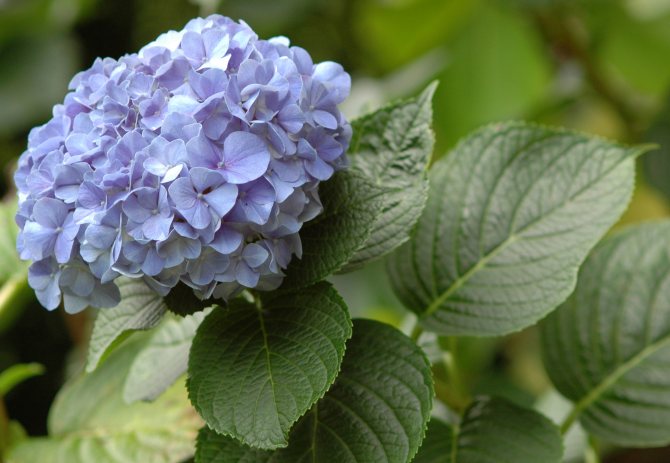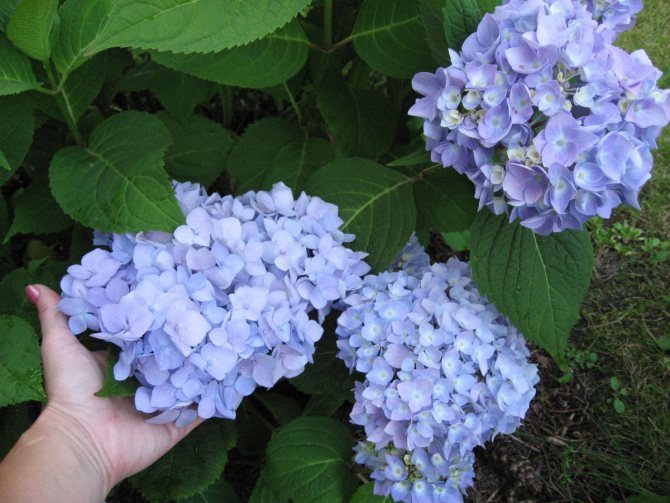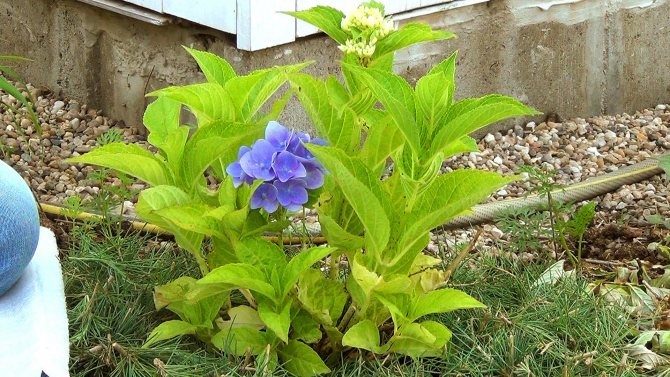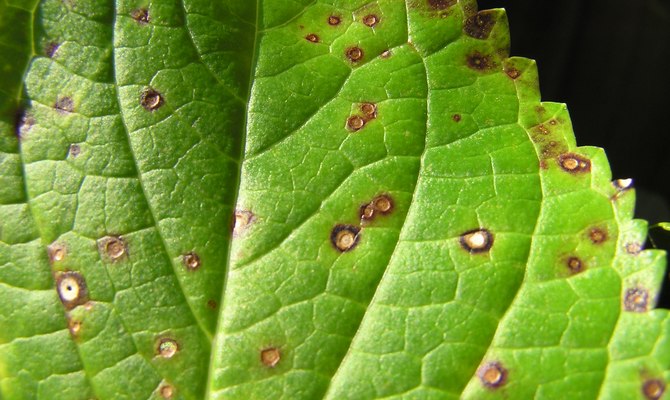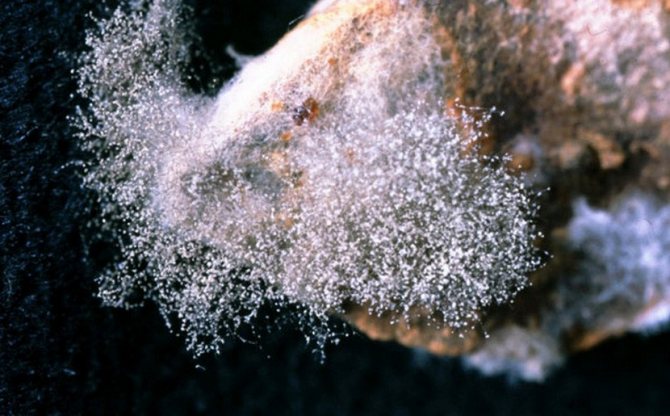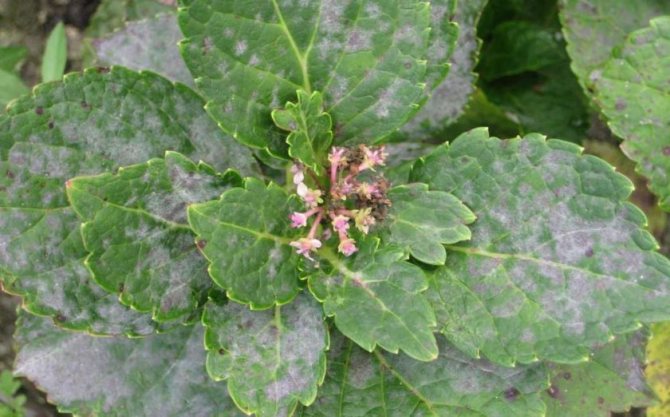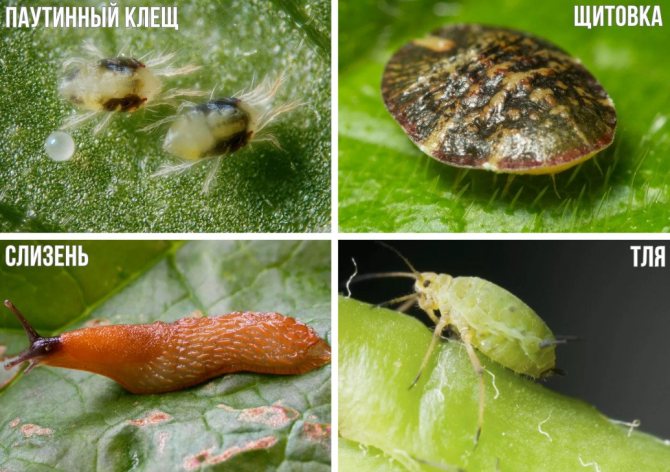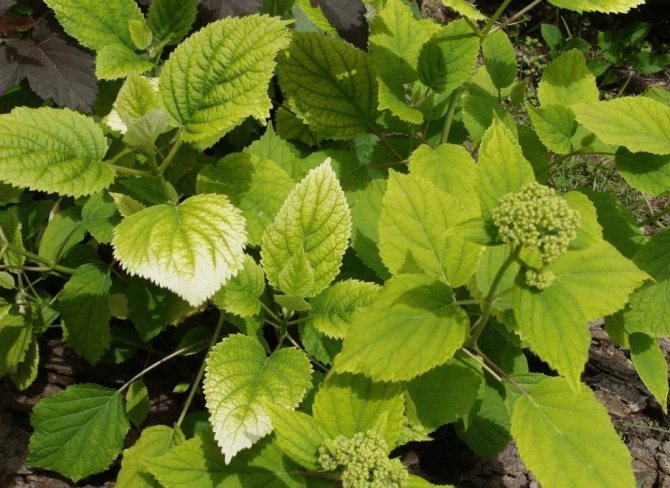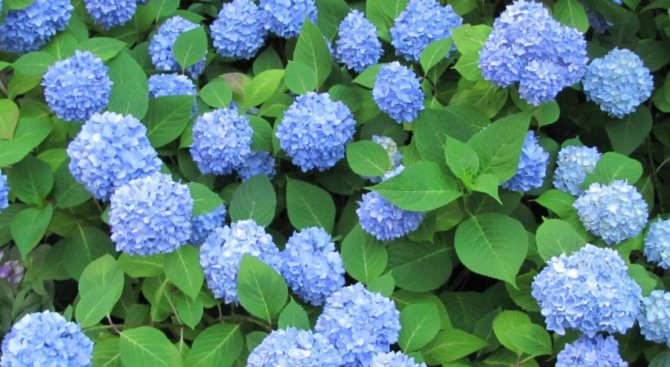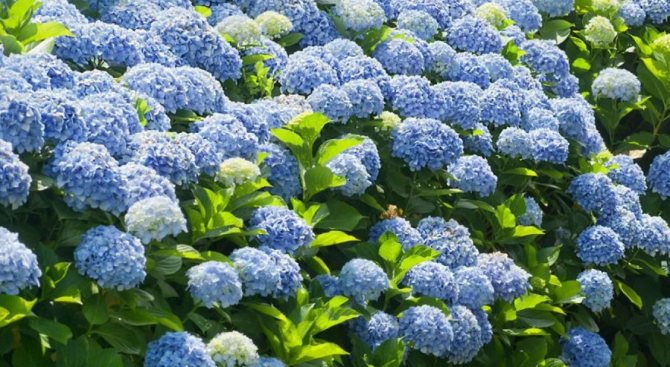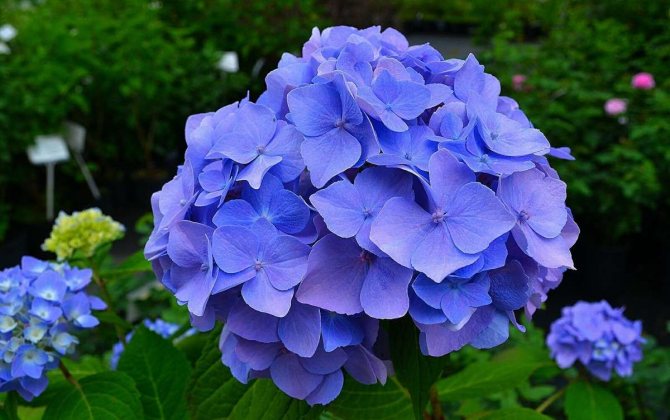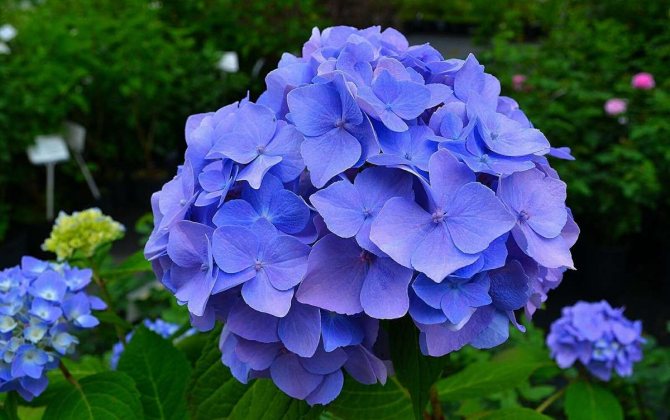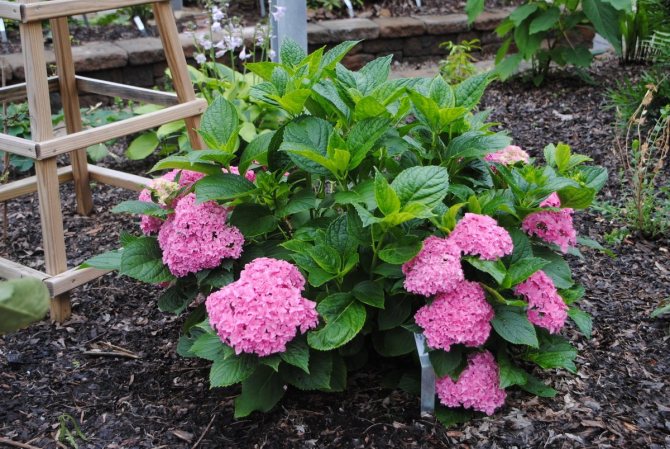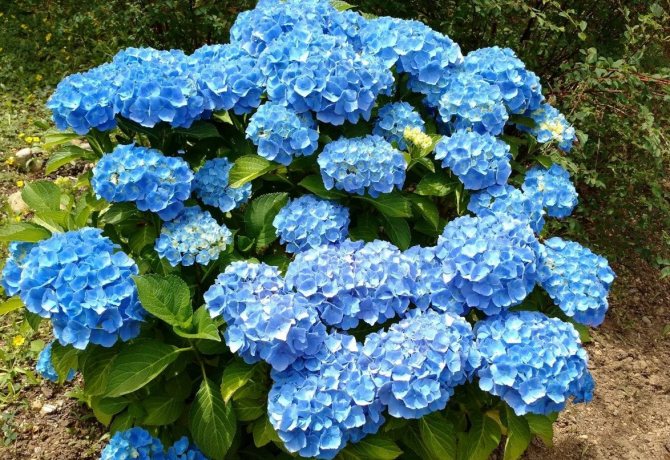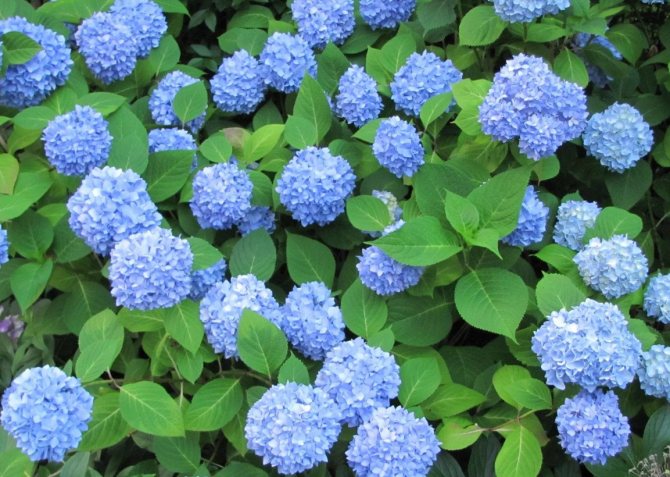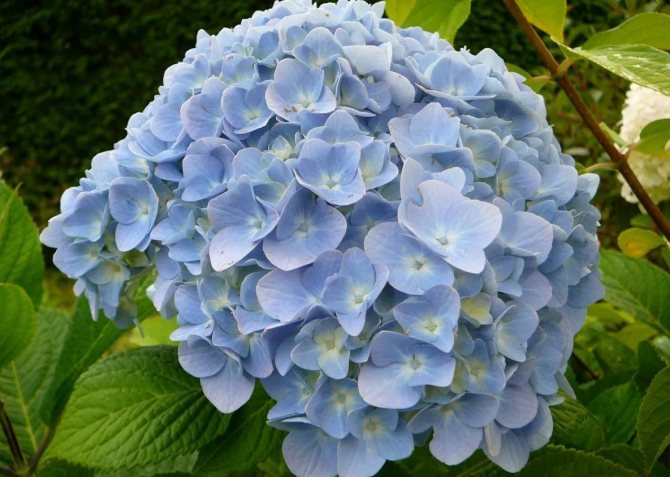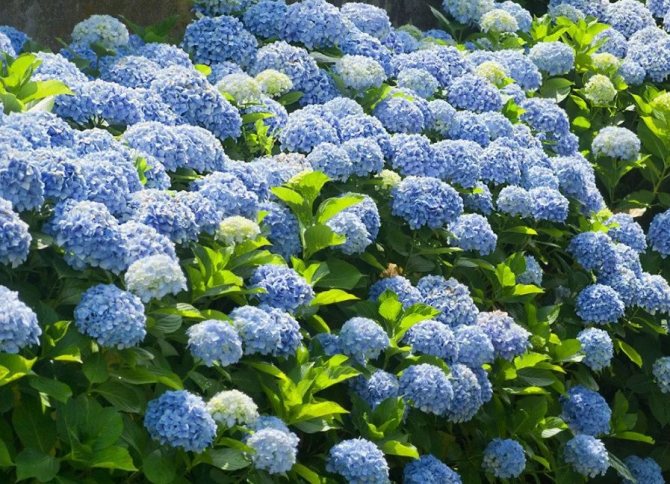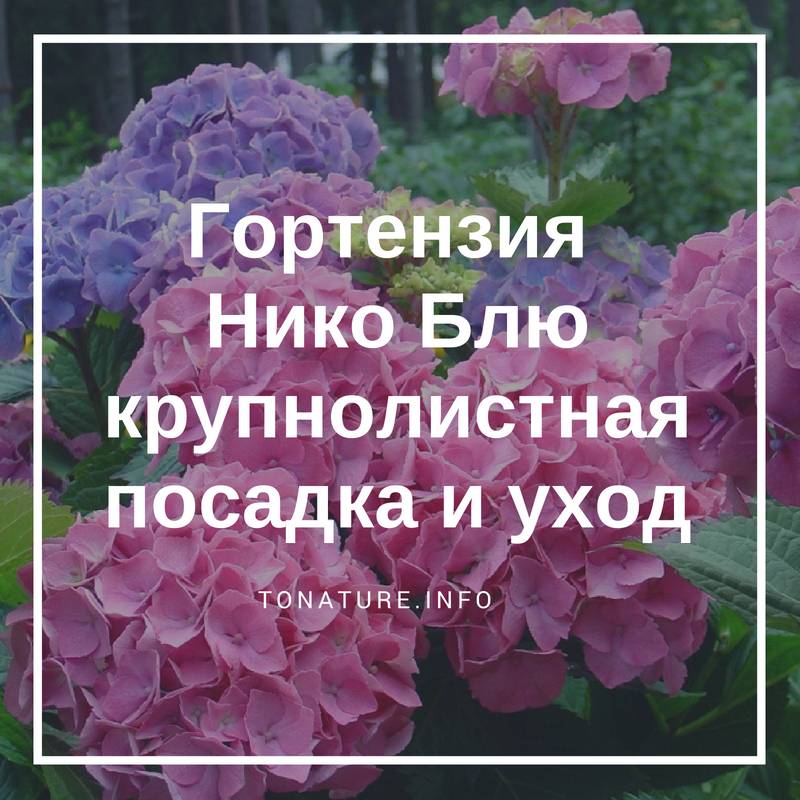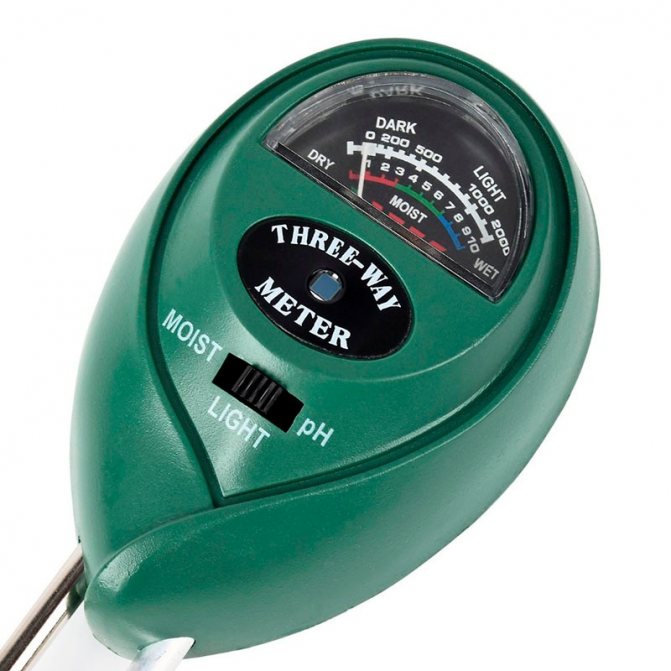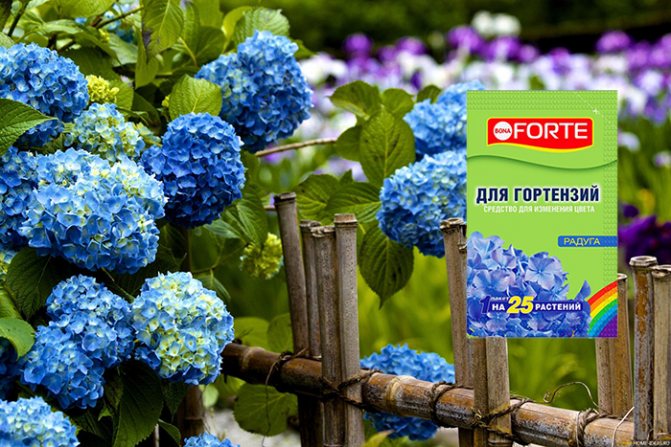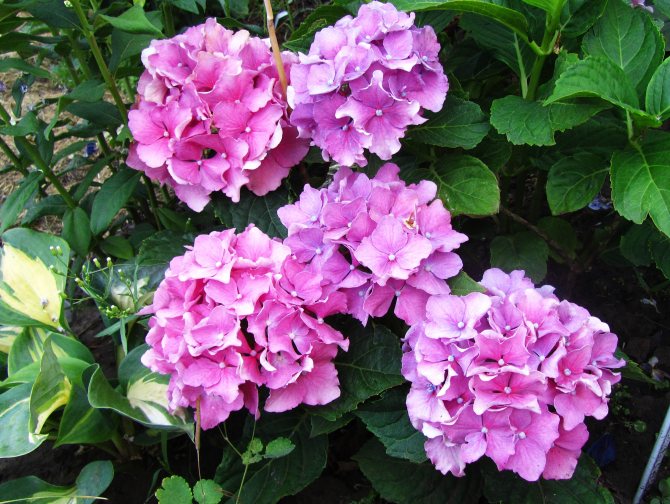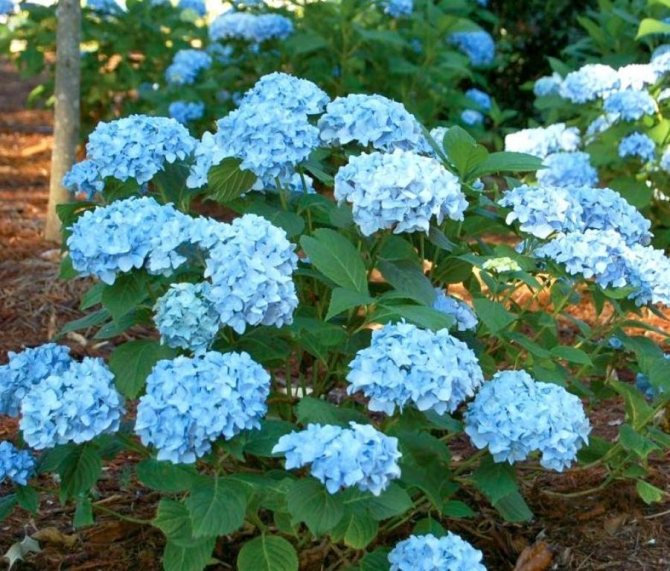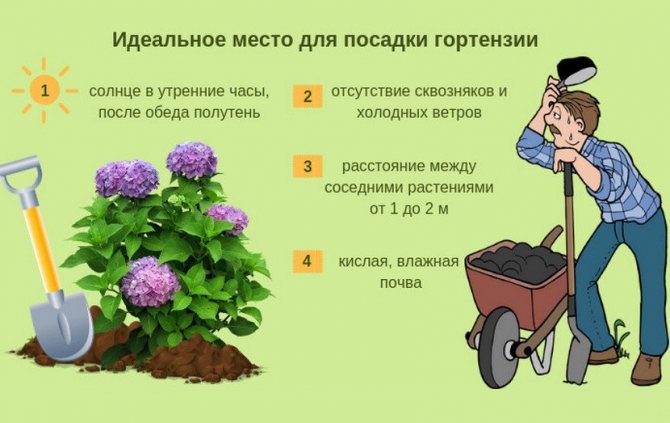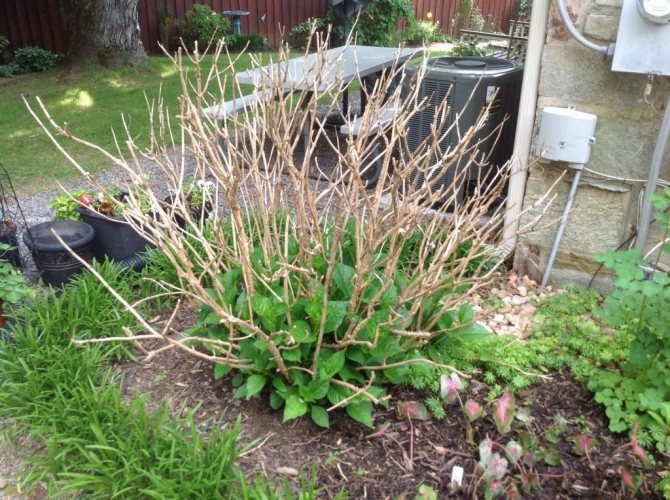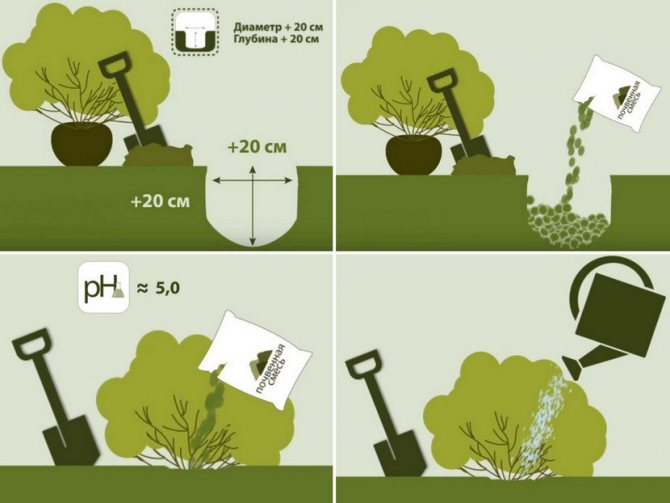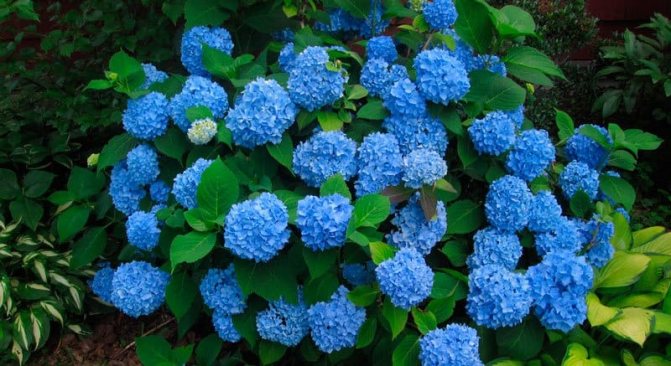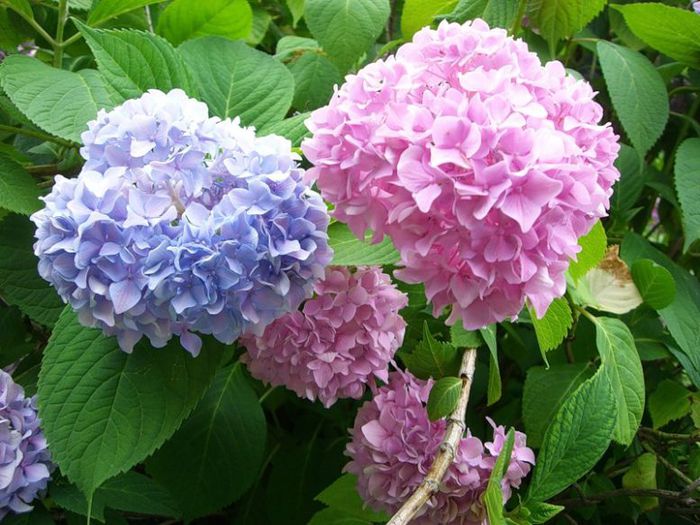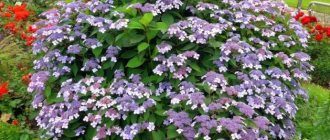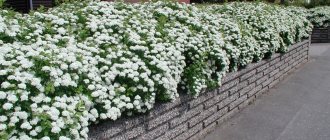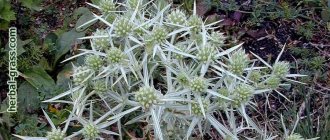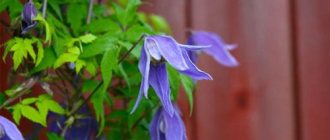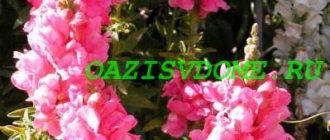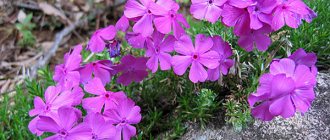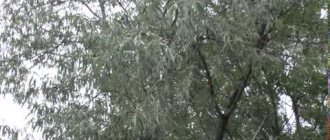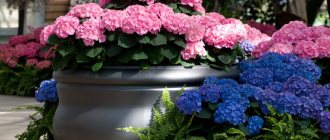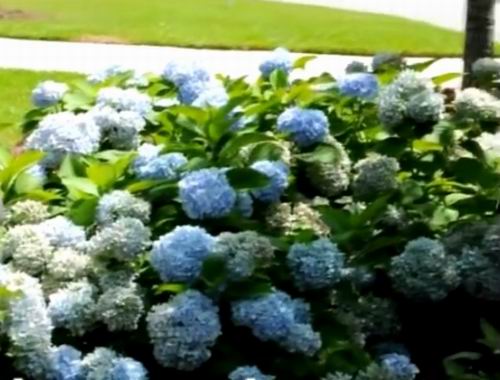
Hydrangea Nikko Blue is perfect for growing at home. This plant comes from such a beautiful species as the Endless Summer hydrangea, which was originally bred, and only then its subspecies appeared.
The height of its stem reaches 120-150 cm, while the shrub is considered to be medium-sized and fast-growing, with an attractive appearance. Every year she releases fresh green shoots, and last year's ones become lignified. Depending on the reaction of the soil, the color of the inflorescence will change from white to pale blue. Flowers are collected in voluminous inflorescences, which in total reach 15-30 cm in diameter. They can appear both on last year's shoots and on fresh ones. Thanks to bright green, large petals with smooth edges and jagged edges, the inflorescence seems very light, even airy.
general characteristics
Hydrangea blue is a member of the Hortensiev family. Plants are found in the wild in Europe, Asia, North America. They differ significantly in their shape, inflorescences and growing method. There are treelike hydrangeas and shrubs, vines and climbing, evergreen, dwarf and tall varieties.
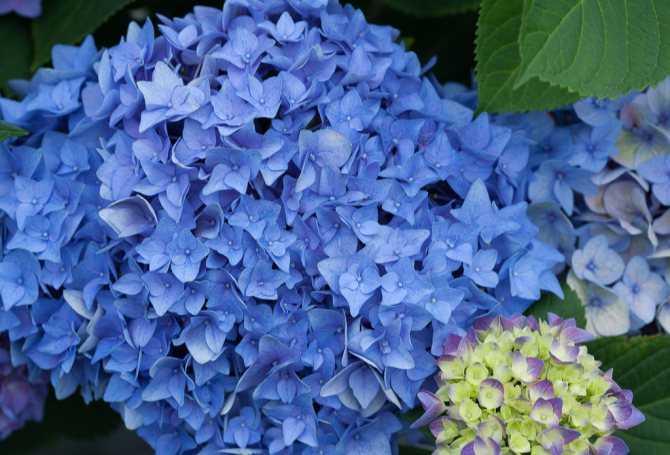

The large-leaved look is famous for its bright blue buds. They lend themselves to staining. Translated from Greek, the name of the plant is translated as "a vessel with water." It accumulates water, likes to grow in moist soils.
Large-leaved blue hydrangea includes several species. They are distinguished by a special color of the buds. Some species are able to change the shade of the inflorescences during the growth process. Blue flowers can beautify any area. This plant is the dream of almost any summer resident.
Diseases and pests
Hydrangea can suffer from insect attacks:
- Spider mite - leads to a marble pattern, yellow leaves, wilting. A cobweb appears from the inside of the leaves.
- Gall nematode - these worms lead to root damage. As a result, the wilting of the bush is observed.
- Leaf aphid - capable of provoking the death of hydrangeas. Parasites are capable of spreading viral infections. When infested with insects, the leaves turn yellow and fall off.
- Snails - pests eat buds, shoots, buds. The emergence of problems is evidenced by the clutch of snails around the bushes.
In addition, the plant can face fungal infections:
- White rot - is a fungal disease. With its development, the shoots acquire a brown tint. After a while, they become covered with a white bloom with dark dots. Fungicides will help to cope with the disease.
- Gray rot - with the development of the disease, the ground fragments of the plant become loose and soft. In addition, the leaves are covered with holes, a gray bloom appears on the culture. Fundazol or Pure flowers will help to cope with the problem.
- Peronosporosis - pathology is accompanied by the appearance of dark spots on shoots and leaves. Their number increases in conditions of high humidity. In such a situation, the culture should be treated with a solution of copper sulfate or fungicides.
- Powdery mildew - leads to the appearance of spots on the leaves. At first, they are distinguished by a green-yellow color, and then acquire a dark brown hue. The leaves are covered with a gray bloom.In such a situation, it is necessary to treat the plant with fungicides and remove the damaged fragments.
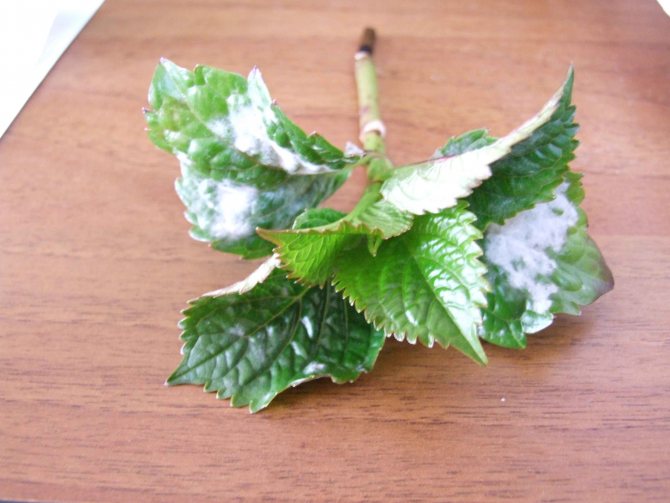

Powdery mildew
Description
Blue hydrangea, the photo of which is presented below, belongs to the category of deciduous plants. This is a flowering shrub. It belongs to the category of large-leaved hydrangeas. In nature, the plant can grow up to 2-3 m in height. On the garden plot, they grow by only 1-1.5 m.
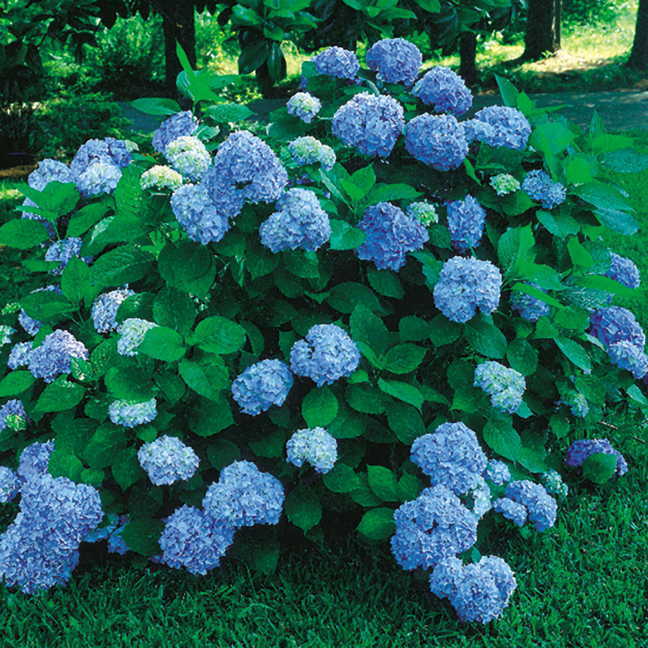

The leaves of the shrub are large, bright green. They are oval in shape. The edges are wavy. The inflorescences are large, spherical, slightly flattened on top. They consist of fairly large flowers. Buds appear on the shoots of the current year. Flowers - one year after planting.
This group of plants includes plants with light, rich blue inflorescences. They can be almost blue in color. It also includes species whose inflorescences change color two or even three times per season. If a pink hydrangea grows on the site, it can be painted blue. For this, the acidity of the soil changes. You need to purchase special fertilizers. The same action allows you to give the flowers a richer shade.
Helpful care tips
Once the color of the hydrangea has been changed to blue, it is important to maintain it. For this, the acidity of the soil is kept at a level of 4-5 pH. They also continue not often, but still water with products containing aluminum.
Experienced gardeners advise not every year to experiment with the color of the petals. A sharp change in acidity causes stress in plants. Therefore, it is best to plant several flowers in the garden, the shades of which will differ.
In order for the hydrangea to bloom blue, it is important to organize the correct complex work. It is the lengthy process that will help you achieve quality results. However, novice gardeners should not worry if they failed to completely change the color the first time. Still, hydrangea belongs to the rather difficult flower crops in terms of care.
Varietal variety
Before considering planting and caring for blue hydrangeas, you need to pay attention to the varietal diversity of the plant. Not all types of flowers can be cultivated in our climate. The most popular varieties are presented below.
Hydrangea Mini Penny is a remontant variety. Inflorescences are pale blue. Also, the Ramars variety is grown in our country. This shrub is quite compact. It is distinguished by its multi-colored flowering. May have flowers of violet, purple or bright blue with a white tint.
Freedom is a two-color variety. At first, the inflorescences are pink. In the middle of the season, they change color to blue. The edges of the flowers are white. The hybrid variety is Compeito. It has a lilac-blue inflorescence with a white center.
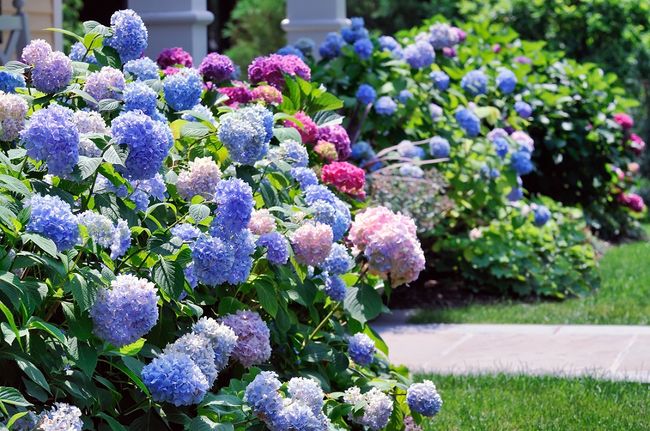

The Perfeshn variety is distinguished by pink-like flowers. They initially have a pinkish tint. After some time, the buds change color to blue. The Jomari variety is distinguished by its compact size. He has blue inflorescences with a terry texture.
How to make a white hydrangea blue
It should be noted that the snow-white varieties of this spectacular flower do not change color. Only flowers with a pale pink, blue-whitish color are subject to a change of inflorescences. When talking about how to change the color of a hydrangea from white to blue, we mean the light color of the petals, the color of which should turn blue.
Step-by-step instruction
- In early spring, the acidity level of the soil is determined. The easiest way to do this is with a special device.
- Further, the soil is acidified. Home remedies work well for this. For example, acetic acid or citric acid. The trunk circle is mulched with sawdust, pine needles or high moor peat.
- Every 14-18 days, the soil is treated with aluminum sulfate or alum.
- Hydrangeas need abundant watering. Every 4 days, 30 liters of water is poured under an adult plant.
- Several times before flowering, the culture is fed. For this, potash dressings are taken with a low nitrogen content.
Timing for boarding
Planting blue hydrangeas in the ground requires the gardener to adhere to certain rules. First of all, you should choose the right time to perform such a procedure. Planting in the soil can be carried out both in spring and autumn. The choice of the season depends on the preferences of the gardener.
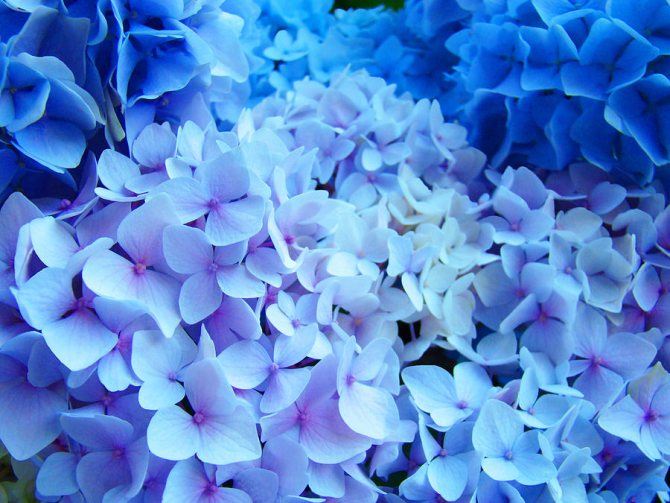

In the spring, the hydrangea is planted in the soil immediately after the snow melts. The earth should warm up a little. After that, you can start working. This method is chosen by gardeners whose dacha is located in the northern regions of the country. Spring planting will allow the plant to root well, to take root in a new place before the onset of cold weather.
If the climate in the area where the dacha is built is moderate or warm, it is quite possible to perform this procedure in the fall. Planting is carried out in September. The plant will have enough time to root itself in the soil before the cold weather sets in.
Nikko Blue pruning
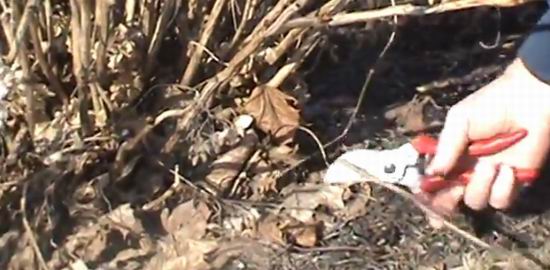

Since flowering occurs not only on fresh shoots, but also on last year's, this subspecies should not be pruned. But, if it is still carried out, then only stronger shoots are left, shortening them by only 2-5 buds. It is also required to break off dry inflorescences, which will contribute to the appearance of fresh ones next year. This large-leaved one simply has huge peduncles, so the shrub needs to be additionally strengthened with special supports to avoid breaking off the branches.
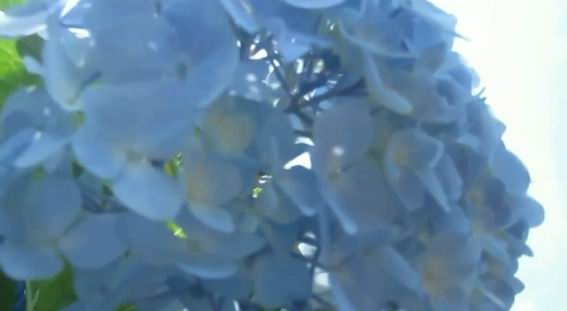

Seat selection
Planting blue hydrangeas outdoors requires proper site selection. To do this, you need to take into account the peculiarities of flower growth. Hydrangea loves semi-shaded areas. She does not tolerate direct sunlight. In this case, the characteristics of the variety must be taken into account. Some plants do not thrive in the shade.
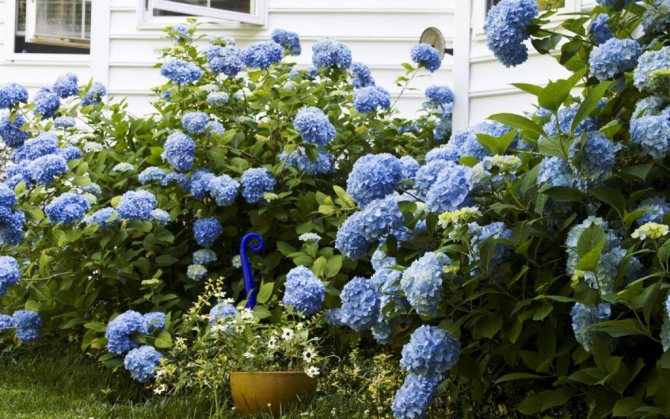

Almost all types of hydrangeas love semi-shaded places. Here they will bloom magnificently, they will not hurt.
When choosing a planting site, you need to consider which plants are nearby. The fact is that hydrangea will take up a lot of space during its development. Therefore, you should not plant it next to other ornamental plants closely. There should be at least 2 m of free space around the hydrangea. This will allow the plant to develop correctly and bloom luxuriantly.
How to test the soil
Any gardener, even an amateur, knows that a good harvest depends largely on knowledge of the chemical composition of the soil of his site. One of the important indicators is the acidity, or pH of the soil.
Soil acidity is a quantitative indicator of the content of acids and salts. The pH value is defined by values from 0 to 14.
In relation to the earthen mixture, they mean the following
up to 4 - strongly acidic environment;
from 4.5 to 5.5 - acidic soil;
from 5.5 to 6.5 - slightly acidic soil;
from 6, 5 to 7 - neutral ground;
above 7 - alkaline environment.
Soil preparation
Planting blue hydrangeas is carried out in prepared soil. You need to know what kind of soil is on the site. You can take a sample of the earth to a special laboratory. This will allow you to properly grow almost any ornamental plants.
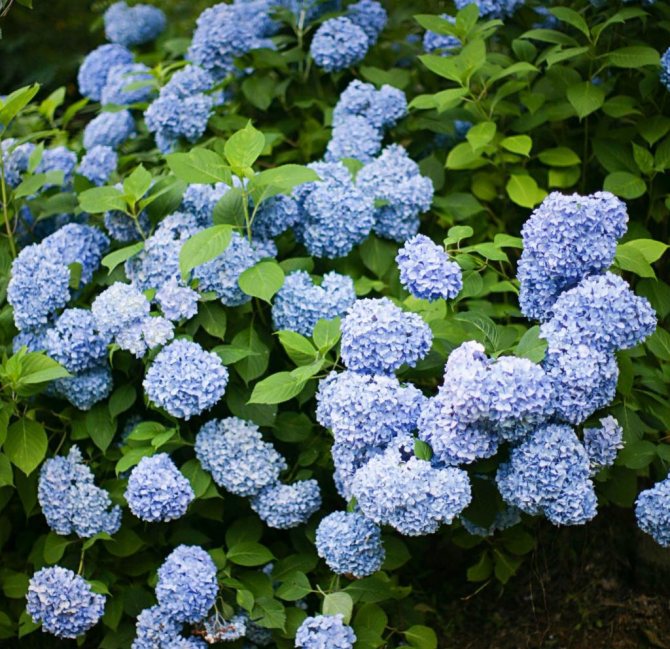

The main rule when growing hydrangea is to properly moisturize it. The soil should be moist but well-drained. Moisture stagnation is also unacceptable. It is best that the soil contains 2 parts of humus, 2 parts of leafy soil. You should also add one part of peat crumb and one part of river sand to the mixture.
If there is too much lime in the ground, the hydrangea will not grow here. The pH level considered ideal for this plant is 5.0. If an overabundance or deficiency of an element is determined in the soil, the appearance of the hydrangea will change.
Fertilization
How to propagate hydrangea by cuttings in summer
There should also be a high-quality feeding of the flower culture. What is the best way to water the garden blue hydrangea? Complex mixtures should be taken such where the main element is potassium. Nitrogen is allowed, but in small quantities.
Additional Information! A spectacular flower should not receive phosphorus-containing dressings, since phosphorus prevents the metal from decaying in the soil. Accordingly, aluminum will not get into the plant.
Landing
After the preparatory work, you can start planting blue hydrangeas. You need to dig a hole about 45 cm deep. The width depends on the size of the roots. Hydrangeas are allowed to be planted in a row. In this case, they dig a trench. It's easier. If you want to make the flowering lush, you can reduce the distance between the plants. Each of them is then planted at a distance of 60-70 cm.
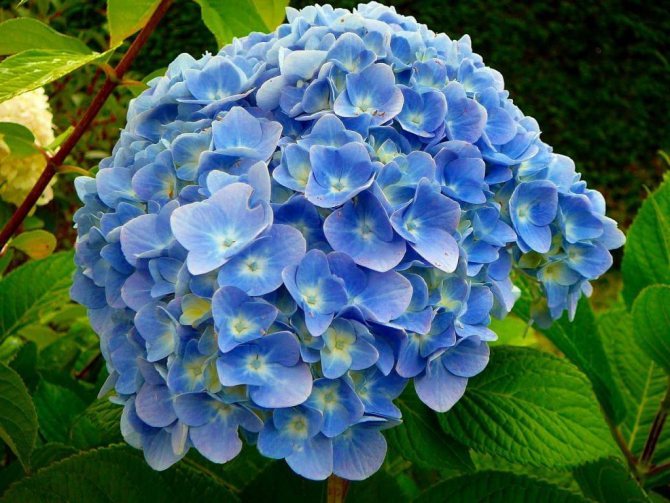

The day before landing, about three buckets of water need to be poured into the hole. The nutrient substrate is also prepared. 50 g of mineral fertilizers are added to each hole. You can also use special hydrangea baits.
A hole is made in the center of the hole. A plant is placed in the recess. The root system is carefully covered with earth. The root collar remains above the surface. After completing the procedure, the plant is watered. The entire earthen lump must be saturated with moisture. The soil near the plant is mulched with bark or peat.
Reproduction
It is permissible to propagate hydrangea by cuttings or seeds. The first method is considered more preferable. To do this, in July, you need to cut off cuttings with 2-3 internodes. For rooting, it is worth using a loose and light soil. It is worth deepening the plant by 1.5-2 cm. It is not recommended to cover the cuttings.
The roots will appear in 2 months. After that, the plants can be transferred to the pots by transferring. In May, young bushes should be pinched to make them more bushy.
To breed hydrangeas with seeds, the planting material must be placed in a nutritious substrate. It is recommended to do this in winter. The soil must be periodically ventilated and moistened. After the seeds have germinated and 2 leaves have appeared, they can be moved to the pots.
Watering
You will need to provide proper care for the blue hydrangea. Watering is carried out regularly. If there is not enough moisture, the plant will immediately begin to wilt. If the owners of the summer cottage saw that the hydrangea began to fade, an urgent need to water it. The plant will quickly return to normal.
Watering is carried out once or twice a week. This takes into account what the weather is outside. In the summer heat, watering should be more frequent. During this period, it may be necessary to moisturize the hydrangea three times a week.
During this procedure, you need to pour at least two buckets of water under each hydrangea bush. If you mulch the soil around the plant, watering can be reduced. Moisture will not drain out of the soil as quickly. In this case, the number of waterings will be reduced. This figure will be once every 10 days. You will need to mulch the soil thoroughly.
Plant care
For the development and lush flowering, it is recommended to feed the hydrangea with organic and mineral fertilizers. Fertilizers that include iron and magnesium are well suited for the plant, or you can buy special fertilizers for hydrangeas in the store. Most of all, feeding is needed during flowering or intensive growth. Chicken manure in a ratio of 1:10 can serve as a good organic fertilizer. This will be useful for the first feeding in April. Other complex mineral fertilizers will not interfere. In summer, it is best to "feed" the flowers every two weeks.
Pruning is an important part of hydrangea care. Thanks to the annual procedure, the height, density, number and size of the inflorescences can be adjusted. For everything to be done correctly, old inflorescences should be removed before new and strong buds appear.Pruning sturdy and fast growing shoots encourages strong branching of the plant. It is best to prune them in early spring, as future inflorescences are laid on the shoots in last year's buds. You also need to cut off frozen, weak and dry shoots.
In order for the inflorescences not to freeze in winter, the plant should be protected from frost and insulated.
This can be achieved with root mulching with leaves, straw, sawdust and a small layer of soil. It is better to do this immediately after frost - in dry weather. For more thermophilic species with more flexible shoots, you can use another method: gently bend the shoots to the ground, attach with hooks and cover with branches or fallen leaves.
Blue hydrangea in the garden
How to color a hydrangea so that a blue flower takes on a rich blue hue:
- You need to look after, creating a comfortable environment. The intensity of the color is influenced by the temperature of the environment, humidity and the general condition of the plant;
- Regular feeding and maintaining the required acidity level will make the inflorescences bright and colorful;
- Iron salts will help the shade change, make it saturated. Such additives can "tint" the shrub, making it more attractive.
It is also important to periodically add a solution of aluminum sulfate to the soil in the garden, acidify the soil and monitor the irrigation and light conditions, and feed during the flowering period.
Temperature and location
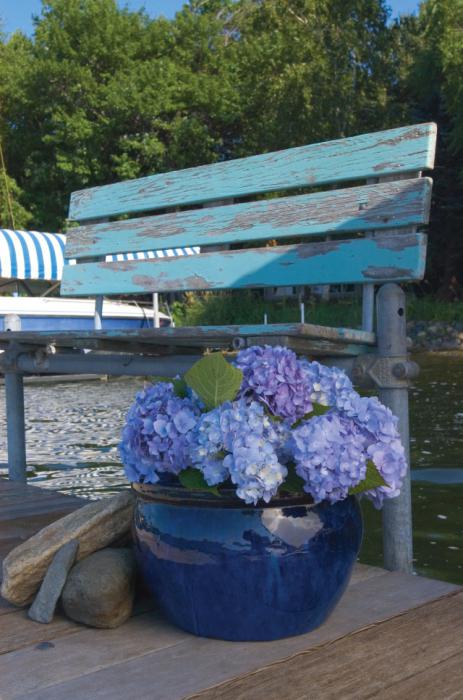

Often from novice florists, you can hear that the plant is difficult to maintain. This opinion arises among those people who do not know how to care for blue hydrangea. You should always remember that the flower belongs to the thermophilic. In summer, he needs a temperature of 18-20 degrees. If the room is warmer, the plant will begin to shed its leaves. The flower loves fresh air, so in summer it is advisable to take it out to the balcony. However, drafts and cold air currents should be avoided. In winter, the optimum temperature is 4-8 degrees.
How to determine the acidity of the soil yourself
The acidity of the soil is very accurately determined by a special device, but the approximate values can be measured independently.
We offer you several simple and affordable ways to determine soil pH:
- Vinegar essence.
It is enough to pour a few drops of vinegar on a handful of earth and observe the reaction. If violent boiling occurs, accompanied by the release of carbon dioxide, then you have an alkaline environment. Small bubbles and weak soil reaction indicate neutral acidity. The absence of any reaction indicates that the soil is acidic.
- Grape juice.
Dip a pinch of soil into a vessel with grape juice. A change in the color of the drink and the appearance of gas bubbles indicate a normal soil pH.
- Currant or cherry leaves.
Fill a few leaves with boiling distilled water. Cool the liquid and throw a handful of earth into it. Changing the color of water after a while is an indicator of acidity: red water is sour, blue is slightly acidic, green is neutral soil.
- Litmus paper.
Place some soil on a clean piece of cloth. Tie it tightly into a knot and dip it in distilled water. Wait for the water to be well saturated with soil. Put down the litmus paper. Changing the color will allow you to draw a conclusion about the state of the soil: from yellow to red - acidic environment, blue-blue shades - neutral soil. This is one of the most reliable ways. Litmus paper is freely available in agricultural stores.
The easiest way to determine the pH level of a soil is visually. If, upon careful examination of the soil, you see reddish-rusty shades, then the soil is highly acidic. A thin iridescent film on the water accumulated after watering or rain is evidence of an acidic soil environment.
Video "How to determine the acidity of the soil and ways to deoxidize it"
Testimonials
There are more positive reviews about this plant on the Internet - thanks to its impressive decorative properties, Nikko Blue's hydrangea managed to win many hearts. Almost everyone notes the duration and splendor of its flowering, many write about the spectacular form of a hydrangea bush.
Negative reviews note the plant's instability to a cool climate, susceptibility to diseases and pests, some delicacy and moodiness. But if the gardener was able to cope with the obstinate nature of Nikko Blue, the plant will delight him for many years.
Hydrangea Nikko Blue is a wonderful example of a garden culture, which, however, can also be grown indoors. And although caring for the plant is rather troublesome, many are striving to plant this beauty - her magnificent blue, lush flowers do not leave anyone indifferent.
Varieties
Hydrangea is most often grown in gardens, but it is possible to keep the flower at home. In total, there are about 80 varieties of this plant. There is also a division by type:
- paniculate;
- anabel;
- large-leaved;
- petiolate;
- tree-like;
- pink.
Indoors, it is recommended to keep a large-leaved hydrangea. This is due to the fact that it is less resistant to frost and does not tolerate temperature changes well. Various types of flower are common in East Asia, South and North America, Sakhalin, Kuril Islands, Japan. China is considered the birthplace of large-leaved hydrangea. In warm subtropical climates, the plant can grow up to 4 meters in height. In colder climates, it can only grow up to a meter. In nature, painted in. Today, breeders have bred new varieties with white inflorescences. But the most unusual one is blue.
How to water a hydrangea to get blue flowers
For this charming flower to bloom blue, the soil pH needs to be 4.5. To increase the acidity of the soil, you can use different methods:
- introduction of high peat into the planting pit during planting;
- adding coniferous litter to the planting pit;
- add water-soluble aluminum sulfate or aluminum alum;
- mulching using high peat and coniferous litter;
- fertilizing with mineral fertilizers (for example, kemir-wagon).
Important! Water with water with "chemistry" must be carefully strictly under the root, so that the solution does not get on the leaves, as it can provoke a leaf burn.
We invite you to familiarize yourself with: European bather - the favorite flower of the trolls
In addition, many flower growers use folk remedies, add lemon juice or even electrolyte to the water when watering.
It is also possible to achieve the desired acidity of the soil by watering the hydrangea with citric acid (2 tablespoons per 1 bucket of water). Such watering begins in early spring and is carried out every 2 weeks until the end of flowering. It is allowed to add such a solution only after watering with clean water.
If you distribute fertilizers under the bush not evenly, then you get a very interesting picture: on one plant, flowers can become both blue and pink tones.
Thus, a novice florist needs to remember: for a blue color of inflorescences, acidic earth and aluminum salts are required. Aluminum is more important for painting than the acidity of the soil. Phosphorus forms poorly soluble compounds with aluminum. Therefore, in order to obtain the desired shade, phosphorus fertilizers must be reduced or eliminated altogether.
Create the color yourself
And yet, how to water a hydrangea so that it turns from white to blue? The most common way to color a hydrangea is by sprinkling it with aluminum alum. This should be done during budding. Correct ratio: 1 rounded teaspoon to 2 liters of water. This method works well for indoor and garden hydrangeas.
A beautiful blue hydrangea will delight the owner at home or in the garden. The main thing is to take proper care of her and know the methods of "coloring".A lot of useful information in the article: Blue Orchid: the nuances of caring for a unique flower.
Winter hardy varieties
Winter-hardy varieties of hydrangea began to conquer the hearts of gardeners in the 80s of the last century. Today there are already several dozen of them, and each variety differs not only in the color and size of the inflorescences, but also in the "technical" characteristics. For example, hydrangea can be used as a supplement to a seasonal rabat, planting varieties that bloom on older shoots. Or as a basis for garden design using remontant varieties.
The minimum temperature also differs depending on the variety. North American plants are able to withstand up to -15 ° C, and European breeders have managed to achieve even greater cold resistance and lower the bar to -20 ° C. Moreover, some varieties can also tolerate lower temperatures.
Regardless of the temperature regime indicated in the annotation to the variety, experienced gardeners do not recommend leaving the hydrangea without shelter.
Today, large-leaved hydrangea has many varieties, but special attention should be paid to the following varieties:
Hydrangea large-leaved Nikko Blue
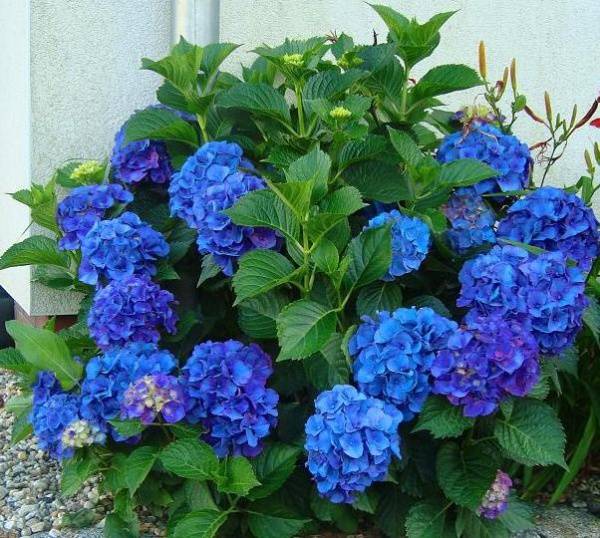

This is one of the few varieties of winter-hardy hydrangea that can delight flower growers, not only in the garden, but also at home. Hydrangea Niko Blue is a bush up to 1.5 meters high with bright green foliage and large, globular inflorescences. In addition, the variety is characterized by a unique coloration. The color can range from white to deep sky blue. Moreover, the florist is able to regulate the color by himself, increasing or decreasing the acidity of the soil. The more neutral the pH, the lighter the flowers. The varieties Mini Penny, Jomari, Hopcorn Blue and Freepon have similar characteristics.
Hydrangea large-leaved Miss Saori
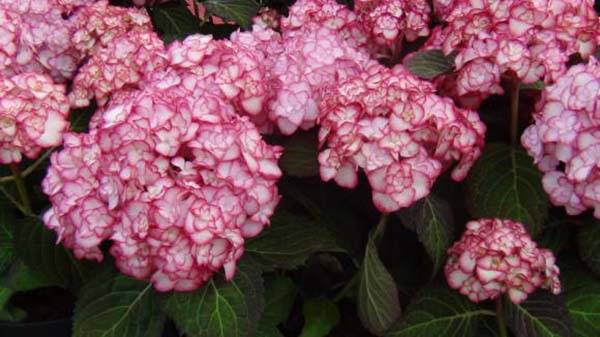

One of the new (selection of 2019) and the most cold-resistant varieties (up to -26 ° C). Unlike Nikko Blue, Miss Saori does not react to soil acidity. Its amazingly beautiful flowers have a matte white color with a pink border. Large, round inflorescences almost completely cover the dark green foliage with a lilac tint and are used for cutting. Miss Saori blooms all summer. The bush grows no higher than 1 meter, so the variety is great for planting in outdoor flowerpots on verandas.
The only drawback is that it requires a very nutritious soil and good moisture.
Hydrangea large-leaved Masya
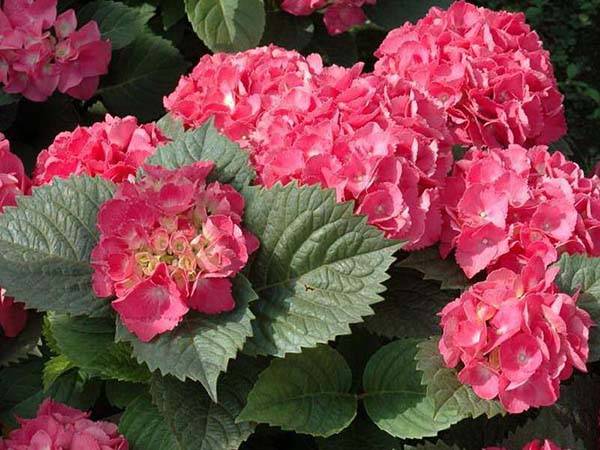

Repaired variety blooming from mid-summer to late October. An adult bush reaches 1.2 meters, but has spreading lashes and in some cases requires a garter. However, the main decoration of the variety is bright crimson flowers with a jagged edge. The diameter of one flower can reach 6 cm, and the total inflorescence is 30 cm. The variety, like Nikko Blue, is sensitive to acidity. For flowers to have a rich color, the pH balance should be maintained at 5.5 or higher.
Hydrangea Endless Summer
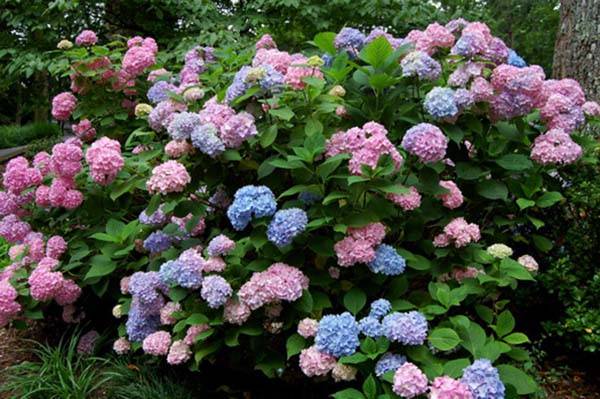

This hydrangea variety became the first plant of its kind capable of forming flowers on young shoots, and gave the name to a whole series of remontant varieties. The flowering of large-leaved hydrangea of this variety does not differ in outstanding qualities. The flowers are blue or pink (depending on the acidity of the soil) form spherical inflorescences up to 15 cm in diameter. But this hydrangea is frost-resistant and is a remontant variety. The bush completely renews its flowers every 6 weeks from the beginning of July to the end of September, for which the variety was popularly called “endless summer”. The plant requires spring pruning.
Hydrangea large-leaved Romance Pink
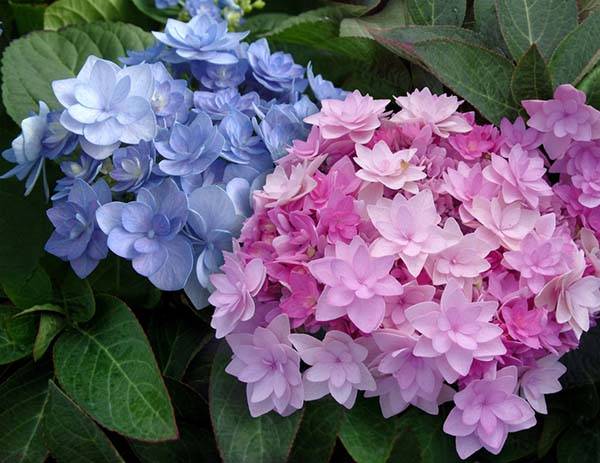

A very effective and frost-resistant variety (up to -25 ° C). Grows rapidly (height about 1.5 meters) and forms large inflorescences of rich pink color at the ends of the shoots. The only negative is very short flowering.
You can admire the Romance inflorescences from mid-July to late August.
Large-leaved hydrangea Tugese
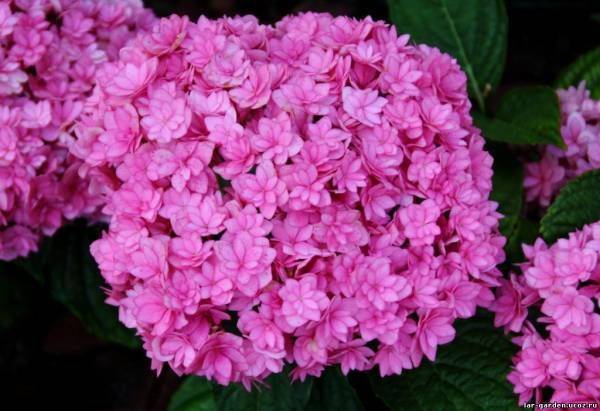

One of the amazing plants. Tugese, like Romance, belongs to the double varieties from the You & Me series. Able to please the grower with a whole fireworks of colors. A compact bush up to 90 cm in diameter looks like a real fireworks. At the beginning of flowering, it is decorated with green flowers, which eventually turn into pink and blue inflorescences. Tugese is able to surprise the gardener with the presence of several color palettes at once on one bush.
A series called Forever & Ever also received positive reviews from professional gardeners. She has several remontant varieties with beautiful double flowers.
Dormant period
Novice growers may be alarmed when they notice that the leaves of the hydrangea are falling. If this happened in winter, then there is no reason to worry. The flower has begun a dormant period that lasts about 3 months. Of course, it is difficult to recognize a blooming beauty in the bare branches, but if you wait for summer, you can be sure that this is the same beautiful blue hydrangea. How to care for a wintering flower? The process is very simple. Watering is significantly reduced, however, the earthen coma must not be allowed to dry. Fertilizing is not needed. Until March, the hydrangea is harvested in a cool, dark place. Young plants, whose shoots are not lignified, do not shed their leaves and hibernate without entering a state of dormancy.
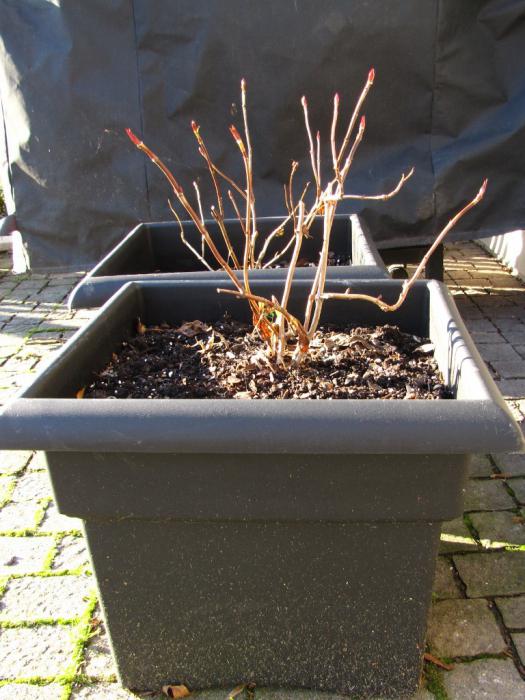

What hydrangea is capable of repainting?
To begin with, we can only change the color of one type of hydrangea - large-leaved or garden (Hydrangea macrophylla).
Other species are not inclined to change colors to please the gardener. There are varieties that change shades in the process of development, but this cannot be artificially influenced. For example, the Pink Diamond panicle hydrangea blooms in summer with white panicles, which by themselves turn pink by autumn.
But you can experiment with large-leaved hydrangea. And make the pink variety blue, and the blue one pink. This is because their color is due to the presence of special substances in the cell sap of petals - anthocyanins. Depending on the environment in which the anthocyanins are located and with what they combine, the petals are colored pink, blue or purple.
As for white hydrangeas, you will not be able to change their color to pink or blue, no matter how hard you try. Their petals do not have the "variability" pigment (anthocyanins), so they will remain white regardless of any adjustments.
Practical steps to change color
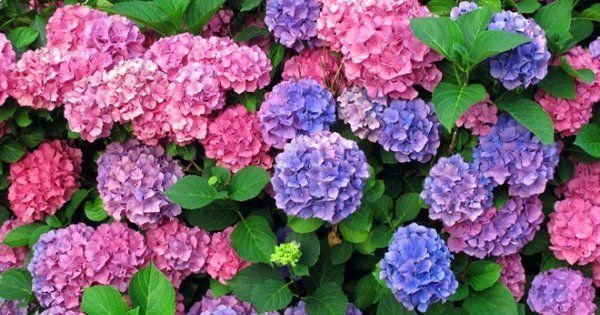

But there are other, more effective methods, using which you can change the color of hydrangia from pink to blue or purple. But it should be borne in mind that not all varieties of this plant can change the color. White hydrangea, both tree-like and paniculate, does not react to the acidity of the soil, therefore, it will not change the color.
We suggest you familiarize yourself with: How to make a greenhouse for strawberries
The color of large-leaved hydrangeas can be:
- pink;
- blue;
- crimson.
Also, representatives of this species can be two-colored and even three-colored.
The colors of these plants change from the presence of aluminum in the soil and its acidity, which is checked using litmus papers (from the school curriculum, everyone remembers phenolphthalein in raspberry acid), which are included in the set of a special device. Also, the kit should contain instructions with a color scale and indicators of pH values. Buying a set is not difficult at any flower shop.
This species often becomes pink, but flower growers want to have both blue and blue. And it is possible!
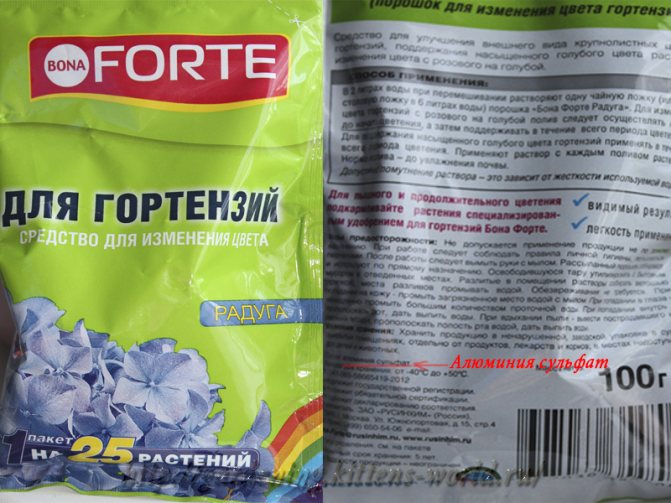

Hydrangea Color Changer
As already clear from the above, white hydrangea does not become either pink or blue. However, in order to achieve a clear blue of flowers, only a few sequential actions are required in relation to the plants.
Soil pH measurement
As already mentioned, the level of acidity of the earth should fluctuate within 5.5, not exceeding this indicator, but not dropping beyond the 5.0 mark. Higher values will give the flowers a rich purple hue.
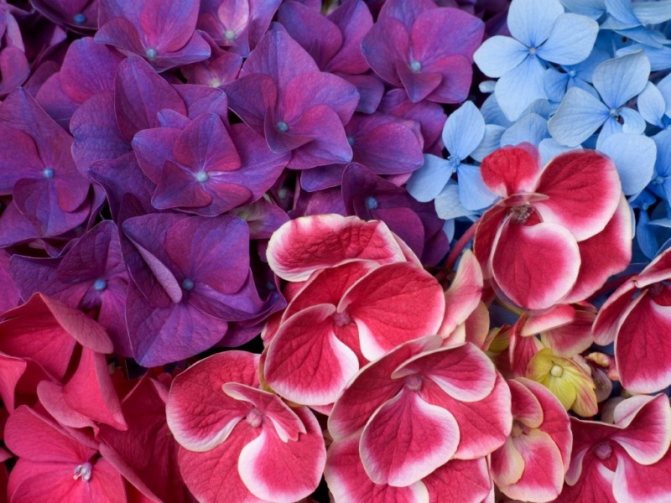

If the soil is neutral and even alkaline, artificial acidification will have to be done. All this is done with the aim that aluminum salts undergo the necessary chemical reactions and can be absorbed by the flora in the garden. Acidification should be carried out to a depth of at least 25 - 30 cm. The second option is to completely replace the soil mixture with an acidic one under the given plant.
Hydrangea blue: description and varieties
A large-leaved hydrangea bush tends to accumulate aluminum in the trunk of acidic soil, which gives flowering a blue color. Many varieties of blue hydrangea have been bred:
Hydrangea Mini Penny
Hydrangea Mini Penny
Note! Hydrangea Mini Penny — light-loving bush, but tolerates shade well, and is also resistant to fungal diseases.
It reaches a height of 60-90 cm. It is distinguished by large, spherical flowers of a blue hue. In alkaline soil, they turn pink. The leaves are bright green. This name was given to the Mini Penny hydrangea due to the compact size of the bush. The flowering period is from July to September. Cover for the winter. If this is not done, then the plant may freeze over, but it will quickly recover, although it will not bloom so abundantly.
Freedom
This plant does not turn blue immediately. From the beginning of flowering, the hydrangea is white-pink, gradually the color changes to blue. On one bush there can be flowers of different shades at the same time, so many call it as a pink-blue hydrangea. Inflorescences reach 15 cm in diameter. The leaves are dark green with denticles along the edge. Loves shady terrain, abundant watering.
Ramars
The bushes of this variety are distinguished by multi-colored buds. They are completely covered with purple, purple flowers, or bloom blue-white or blue inflorescences. The bush reaches 80 cm in height, moisture and shade-loving.
HopcornBlue
Note! The variety got its name from the similarity of flowering with popcorn.
Many call it that - Popcorn hydrangea. The color is bright lilac or purple. Prefers a lighted area, no need to cover for the winter. The bush reaches 1 m in height. Blooms from July to September.
Jomari
The flowers are large, star-like, blue or blue. The bush reaches a height of 80 cm. It blooms from June to October.
Compeito
Hydrangea of this variety has a lilac-blue tint of inflorescences, the middle of which is white. The plant has smooth petals, oval leaves with ribbed edges.
Blueberry Cheesecake
The height of the bush is 80-120 cm. Characteristic features: branched shoot, flat petals, inflorescences up to 20 cm in diameter. The variety does not like direct sunlight. At the end of flowering, the leaves turn reddish.
Spike Blue
Inflorescences are large, spherical. Flowers are blue or pink, petals with wavy edges. They bloom on the shoots of last year and this year from July to September. Reaches 120 cm in height.
Spike Blue
Hydrangea Blue Wave
The variety was developed in Holland. It differs from the rest of the bushes by a strong stem. Flowering peaks in mid-July and throughout August.
Varieties requiring shelter
The main difference between frost-resistant varieties is that they are able to withstand lower temperatures and do not require effort on the part of the gardener. However, many varieties of large-leaved hydrangea, taking into account a good shelter, also tolerate rather low temperatures. The below species hibernate quietly if the temperature does not drop below 17-18ºC.
Hydrangea large-leaved Sibylla
Hydrangea macrophylla Sibilla has a high decorative quality of leaves and flowers.
The shrub is low up to 1 meter.
Its giant (up to 30 cm) inflorescences, thanks to the glossy sheen, resemble fine porcelain figurines.
Sibylla can vary in color from purple to deep pink.
Planting singles or in groups, can be grown in a container.
Hydrangea large-leaved Hot Red
The red cap of this hydrangea will be visible from afar.
However, the bushes of this variety barely grow to a meter, and the diameter of the inflorescences does not exceed 15 cm.Which compensates well for Hot Red's ability to keep the shape of the bush. Lush bush, flowering from July to September
In order for Hot Red to please with flowers, it is necessary to leave last year's shoots.
Hydrangea large-leaved Mariesia Perfect
The drooping, reddish-brownish stems have long leaves and pale blue flowers.
Perfect grows only 50 cm in height, but it is characterized by the fastest growth in the hydrangea family.
Due to its special decorative qualities, this variety always attracts attention, and in skillfully designed compositions it is ready to compete even with roses.
Large-leaved hydrangea Renata Steiniger
A variety of the Dutch selection.
Tall bush with graceful rounded inflorescences of dark blue or bright pink color.
In a single planting with a steiniger, you can decorate any flower arrangements. In addition, the variety is suitable for group plantings and hedges.
Hydrangea large-leaved Aisha
In a subtropical climate, it can grow up to 4 m, but closer to northern latitudes it grows to a maximum of 1.5 meters. A distinctive feature is erect stems with spherical inflorescences at the ends. Flowers, like all hydrangeas, can change color depending on the acid balance of the soil. They are either pink with red blotches, or blue.
Aisha blooms at the end of summer, but if you add gibberilin to the water when watering, you can speed up the appearance of flowers by a couple of weeks.
Hydrangea large-leaved Alpengluchen
This variety is perfect for lovers of red flowers.
The plant grows no higher than 1.25 m. On neutral soils, the flowers may acquire a dark pink color.
Another feature of this variety is the flowering period of Alpengluchen falls in the first half of summer.
Hydrangea Red Baron
Another fiery red variety. However, unlike Alpengluchen, the Baron's lower temperature limit is only -15 ° C.
But the variety is perfect for home cultivation. And thanks to the beautiful foliage, it will look very decorative even during the dormant period.
Be sure to cover for the winter.
Varieties with an indication of frost resistance up to -18 ° C need a mandatory shelter for the winter in the climatic conditions of the middle zone. Not at all suitable for breeding in colder northern latitudes
The birthplace of hydrangea is Japan, southern China and some tropical islands, which explains its thermophilic nature and the need for high humidity. Even when preparing a hydrangea for a winter shelter, so that it can withstand frosts better, in the fall it needs to ensure good watering. In general, knowing some of the intricacies of care, it will not be difficult to grow a beautiful hydrangea in your garden plot.
Feeding hydrangeas
Since a certain acidity of the soil is needed for a rich color of inflorescences, then every two weeks it is necessary to water the plant with the addition of alum. You can also experiment with the color scheme, fertilizing only one side of the bush.
But the ash, which gardeners love to use so much, will only harm the hydrangea. If there is a desire to "treat" the hydrangea with organic fertilizers, it is better to use a weak mullein solution.
It is necessary to make feeding taking into account the phases of plant growth:
- in early spring, fertilizers will help to form young shoots faster;
- at the beginning of summer, feeding is necessary for a better ovary of buds;
- in the middle of summer, the plant is fertilized to extend the flowering period and provoke the laying of new buds (especially for remontant varieties).
In the first year of life, it is important to water young seedlings with a weak solution of potassium permanganate, this will protect the shoots from the formation of rot. And in the fall, before the shelter, it is imperative to treat the hydrangea with Bordeaux mixture, this will help prevent the development of fungal diseases.


